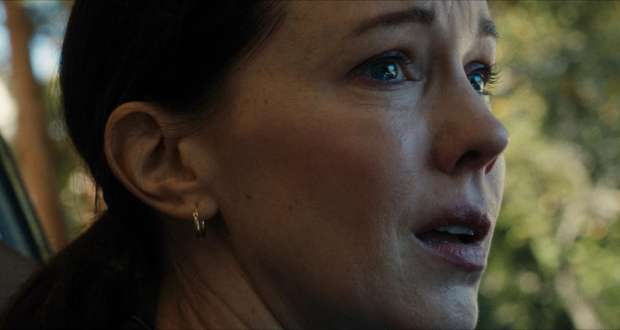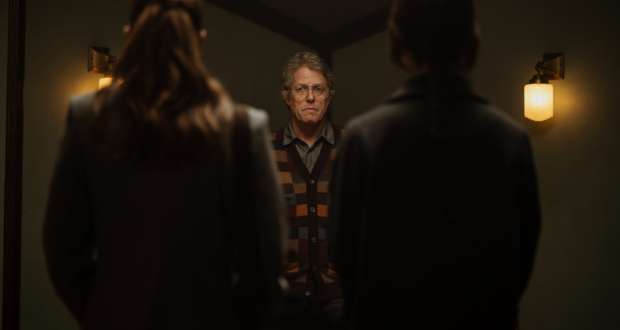Academy Award-nominated Director Nicole Newnham walked the Red Carpet at the Nashville Film Festival on Saturday, September 30th, for her 116-minute documentary The Disappearance of Shere Hite. It was exactly 47 years ago on the same date in 1976 that author and feminist Shere Hite held a press conference to announce the release of her first book, “The Hite Report.”
Hite, a model-turned-author, worked on the book for 5 years, distributing thousands of questionnaires about female sexuality to the women of America. “The Hite Report” would go on to become the 30th best-selling book in history, with 20 million copies sold in 36 countries. It was translated into 19 languages and became a groundbreaking phenomenon.
Hite said she was a graduate student at Columbia studying the Enlightenment when she decided that, of the options available to her to support herself, writing this book on a subject she was interested in was her best option for making money. She had previously posed, often with little to no clothing, for a book cover artist and had done a pictorial for “Playboy“. These photo shoots came back to haunt her and undermine her credibility in Puritan America after her initial success. Nudity, then as it is now in Puritanical America, is not well tolerated.
While her childhood did not seem to be a particularly happy one, as her parents did not stay together and eventually each abandoned her, and she was raised by her grandfather, she seemed, even as a child, to be very self-possessed. There was mention of her having lived through three divorces in her young life before she arrived at her grandfather’s house. Her attitudes towards sex and relationships were very progressive for the 70s and 80s, but she seems to have come to them all on her own. She once publicly announced that she was bi-sexual, at a time when few would go public with that news.
Director Nicole Newnham talks about her Shere Hite documentary “The Disappearance of Shere Hite.”
Amazon described “The Hite Report” this way: “100,000 women, ages 14 to 78, were asked what they do and don’t like about sex; how orgasm really feels, with and without intercourse; how it feels not to have an orgasm during sex; the importance of clitoral stimulation and masturbation; and to name the greatest pleasures and frustrations of their sexual lives, among many other questions. The Hite Report declares that orgasm is easy and strong for women, given the right stimulation; that most women have orgasm most easily during masturbation or clitoral stimulation by hand; that sex as we define it is a cultural institution, not a biological one; and that attitudes must change to include the stimulation women desire.”
The news that women could get off on their own, so to speak, was earth-shaking. The documentary states, “We (women) have been adjusting our bodies to male sexuality for centuries” and further states that 95% of women faked orgasms, often just to escape the demands of the ordinary missionary position, which, without manual stimulation, did not always work well for a woman’s physiological anatomy. If women didn’t need men to have an orgasm, were men threatened by becoming obsolete?
Hite followed up her groundbreaking book on female orgasm with a book on the male sexual experience, and the men of America did not take kindly to the news that women could orgasm without them (from her first book) and that men were raised with a real problem communicating their true emotional state to others. The backlash was extreme and ongoing. Ms. Hite took it personally. She engaged with her critics and tried to correct their misconceptions about her and her work, but that simply led to frustration and ultimately drove her from the public arena in the United States. Publishers in the United States were not bidding on her subsequent books and her reputation was besmirched by those who chose to bring up her “Playboy” photo shoot and her other modeling jobs as a reason not to take her legitimate credentials seriously. Her methodology was under constant attack.
The Director shared that the NBC team that worked on the film “were obsessed with it. We just loved it. We loved her.” Ms. Hite was a very beautiful woman with a New York City wardrobe. She was always impeccably attired. The footage of her taken well into her fifties and sixties reveals a woman aging gracefully, who still has a body that she is proud of and is not too prudish to share herself with others. In fact, one of the reasons that Hite gave for writing her first book (and subsequent ones) was this: “Each individual should be able to decide how to share their body with another person.” Hite also hoped that her work on male perspectives on sex (a book that did not sell as well) would allow cultural change to occur. But did it?
Among some of the more surprising factoids in this Nashville Film Festival offering was the evidence of the successive erasure of knowledge. A word for clitoral stimulation does not even exist in English. In a clip taken from Stephen Colbert’s show, we see that he is uncomfortable using the appropriate terms for female body parts. The clip of David Hasselhoff and Hite on the Mike Douglas show is a good indication of how difficult Hite’s task was in repressive America.
Shere Hite appears on the Mike Douglas Show with David Hasselhoff.
THE GOOD
The music in the film is especially good at underscoring emotional moments. Music Editor Porsteinn Evford and additional music, scoring, and score production by Paul Koch added immeasurably to the film’s impact. At least 10 times during the film I wrote NICE MUSIC HERE with a plot point that it underscored, Hite’s favorite Rachmaninoff 3rd piano concerto and various classical pieces by the likes of Chopin are used, and we learned from Director Newnham that Shere Hite left copious notes about her favorite musical pieces, who should play her if a movie were ever made, and what her favorite color palate was (rose and green). Voice-over work was done by Dakota Johnson, and it was exceptional. When you watch clips of the real Shere, Dakota Johnson’s voice seems indistinguishable from the real woman.
The cinematography and editing were equally excellent. The entire movie is a well-done, fascinating piece of history and it was encouraging to hear that the director plans to make more films about other “forgotten” women who disappeared (one during the Renaissance). I look forward to seeing more movies from Nicole Newnham’s Cocofilms enterprise. It wouldn’t surprise me to see her Oscar-nominated again.
THE BAD

Nicole Newnham, Director of “The Disappearance of Shere Hite” at the Nashville Film Festival. (Photo by Connie Wilson).
We did not learn enough about “the early years,” which may be because Shere Hite didn’t like to talk about her troubled childhood. Plus there was so much to cover in her career.
We didn’t learn enough about her German pianist husband or her later life in Europe. She renounced her U.S. citizenship in 1995 and simply vanished from view. Modern women who were not around in the 70s or 80s don’t know who she is or was. Wikipedia does not even have an entry.
Her final years suffering from a debilitating nerve disease are also not covered.
The filmmakers did not actually interact with Ms. Hite, who died in 2020, but another “bad” thing was her later pronouncements that she felt women of today were going to have to fight the same battles over again for equality. She believed that today’s women would have to do more organizing, as had been done in the 70s and 80s.
We don’t know whether her marriage was happy or resembled many of those limned in the questionnaires she collected for her books.
There was a slight amount of confusion regarding the film’s final line of dialogue about a daughter. Hite had no children and the remark was from one of the questionnaires that was sent to the project, but it sounded very much like the voice representing Shere Hite.
The progress towards a more accepting populace in 2023 seems nil. In fact, it seems as though we, as a country, are regressing, not progressing. T
The treatment that the author receives on various talk shows (one, in particular, consisting of an all-male audience on “Oprah,”) is hostile, unfriendly, and unfair. Hite almost gives off a vibe of an alien who has fallen to Earth, like David Bowie in “The Man Who Fell to Earth.” She seems other-worldly both in her openness to all and in her appearance and presentation. Tragically, her success was, in some ways the best thing to happen to her while also the worst thing to happen to her. Publishers in the U.S. turned their backs on her and she was forced out of her homeland. It is also sobering to see the film clips of the Clarence Thomas hearings and realize what the class prejudice and racial prejudice of that hearing engendered.
Hindsight is always better than foresight. Certainly the feeling after viewing this thought-provoking in-depth look at a fascinating forgotten celebrity author. A truly worthwhile two hours that will both entertain and inform. If you’re Sher Hite’s age (she died in 2020 at age 77) you’ll remember her and her book.
If you don’t know Shere Hite or “The Hite Report,” you definitely should check out this documentary.






















